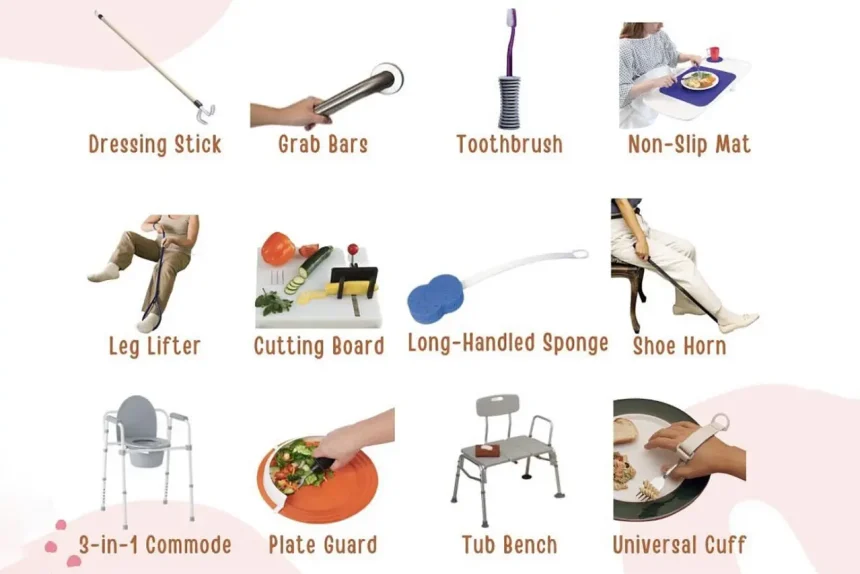Adaptive equipment is used to compensate for physical limitations, promote safety, and prevent joint injury. Essential for enhancing daily living activities, this equipment is vital for individuals with fine motor skill deficits.
Occupational Therapy Adaptive Equipment for Eating
Adaptive eating utensils are specifically engineered to help individuals who experience challenges grasping standard utensils due to conditions like arthritis, Parkinson’s disease, CVA, and multiple sclerosis. This equipment makes the task of eating manageable for people with tremors or other physical limitations.
Example: Large handle utensils with grips made of soft foam or plastic aid those with limited hand strength.
Adaptive Utensils for Poor Hand Grasp
Designed to increase the surface area for easier gripping, adaptive utensils help individuals maintain a better grasp despite hand limitations.
- Weighted utensils provide proprioceptive feedback, minimizing hand tremors and enhancing control.
- Swivel utensils are useful for maintaining utensil balance, preventing spilling due to hand tremors.
Adaptive Equipment for Fine Motor Skills
Many adaptive tools aid in compensating for deficits in fine motor skills, improving user independence.
- Angled utensils are adjustable and assist those with limited range of motion.
- Universal cuffs provide a functional grasp for users with severely limited hand mobility.
Rocker Knife Occupational Therapy
Rocker knives are invaluable for those with limited hand strength, aiding single-handed use with a curved blade that requires less motion to cut through food.
Example: Knife/fork combos allow dual functionality for one-handed users, incorporating tines for skewering food.
Adaptive Plates and Bowls
Adaptive dining ware features modifications such as high lips or suction bases to secure them in place, promoting ease of use during meals.
Suction plates and bowls prevent tipping, while sectioned dishes keep food separate and accessible.
Want detailed practice tips to ace the NBCOT® exam? Join now for full access!
What is adaptive equipment in occupational therapy?
Adaptive equipment in occupational therapy refers to tools that compensate for physical limitations, promote safety, and prevent joint injury. It enhances daily living activities for individuals with fine motor skill deficits.
How do adaptive eating utensils help people with hand limitations?
Adaptive eating utensils are engineered with features like large handles, soft foam grips, and weighted designs to assist individuals with limited hand strength or tremors, ensuring they can eat independently.
What are the benefits of using rocker knives in occupational therapy?
Rocker knives are beneficial for individuals with limited hand strength, allowing single-handed use with less motion. They enable easier cutting of food with their curved blade, making dining more accessible.
Why are adaptive plates and bowls recommended for users with fine motor skill deficits?
Adaptive plates and bowls have modifications such as high lips and suction bases that prevent tipping and ensure stability. These features make it easier for individuals with fine motor skill deficits to enjoy meals without spills.
How can adaptive utensils improve dining experiences for those with poor hand grasp?
Adaptive utensils like weighted and swivel designs provide increased surface area for easier gripping and reduce hand tremors, improving control and preventing spills, thus enhancing dining experiences for those with poor hand grasp.



